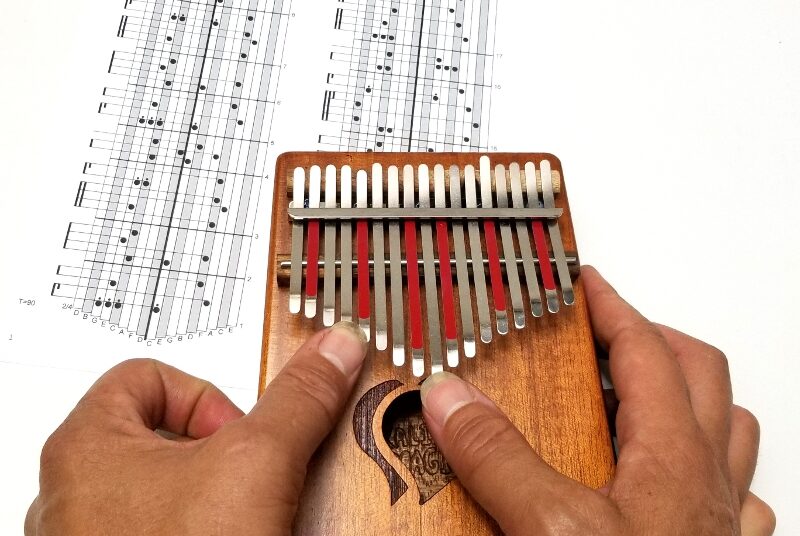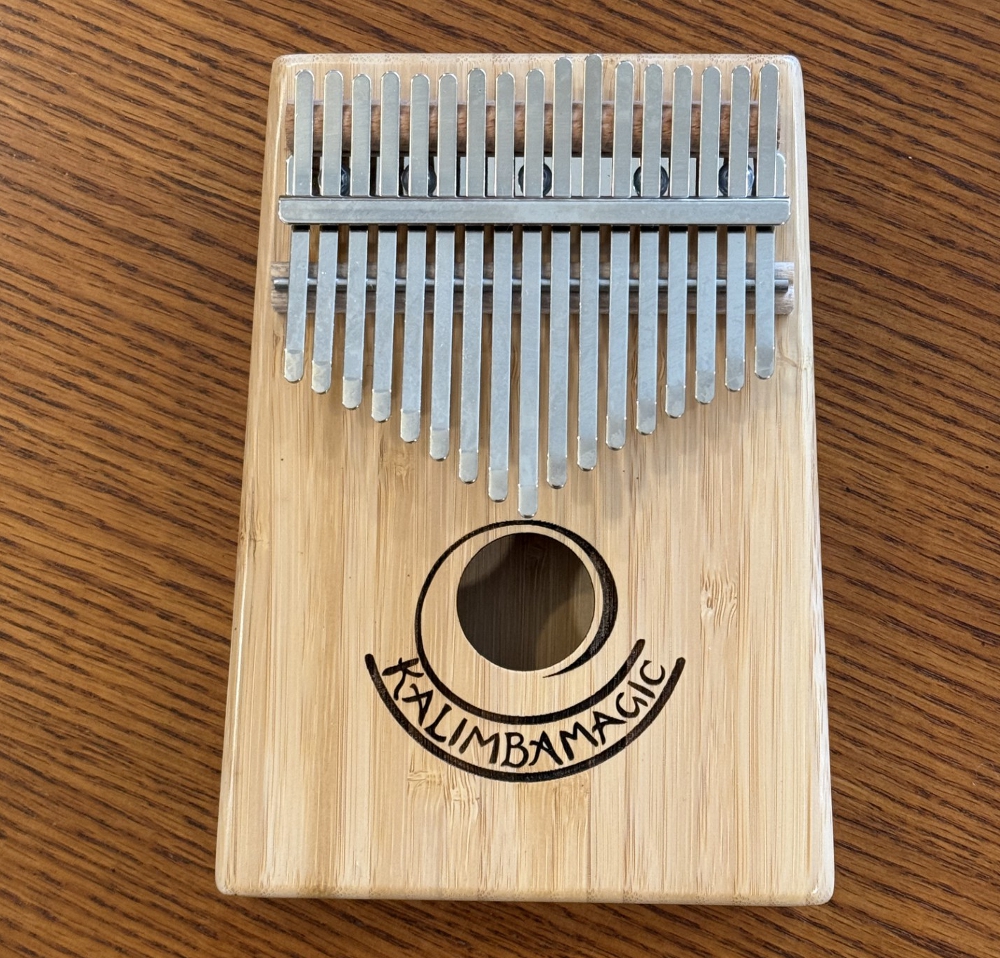
Use of this website constitutes acceptance of the Privacy Policy and User Agreement. Copyright © 2020 Kalimba Magic. All Rights Reserved.
The two previous tips illustrated how to play the upper octave G major scale and the lower octave G major scale on the Alto kalimba. This tip combines the upper and lower scales and plays them at the same time.
The upper octave scale on the Alto kalimba goes left – right…. while the lower octave scale goes right – left. This means that while your left thumb is playing the middle G, your right thumb can play the low G. When the right thumb is playing the high A, the left thumb can play the low A. You can do the entire scale doubled this way, as is indicated in Measure 3 in the Alto kalimba tablature shown here.
Why would you want to double the scale in octaves? First, it is a great exercise. It helps you know the instrument better.
Second, it sounds great. Beethoven is famous for writing the same melody on several different instruments in a symphony orchestra, played in the basses, the cellos, the violas, and the violins. Played the same phrase in several different octaves gives it great power.
The kalimba doesn’t have quite as much power as a symphony orchestra in Beethoven’s hands, but doubling a melody in octaves does make it more powerful than just a single note melody.
There is one drawback to doubling the octaves. By alternating left-right, you can actually play the scale very fast on the kalimba. If you double each note, both right and left thumbs both have to play all the time, and you can only play half as fast as if you did not double.
The song in the video plays a phrase at 1 minute 5 seconds that illustrates doubling the scale in octaves on a G minor tuned pentatonic kalimba. The riff goes up and down the scale, and illustrates the limits of how fast you can play while doubling the octave. The following phrase goes up and down the scale in single notes, is faster, and is significantly easier.


Sign up for our newsletter and free resources with your email address:
We pinky promise not to spam you and to only send good stuff.
 Seek to Infuse Your Musical Moments With Beauty and Magic
Seek to Infuse Your Musical Moments With Beauty and Magic Kalimba Magic – We Give You The Tools You Need to Succeed
Kalimba Magic – We Give You The Tools You Need to Succeed Back in Stock! The Bamboo-17 Kalimba
Back in Stock! The Bamboo-17 KalimbaUse of this website constitutes acceptance of the Privacy Policy and User Agreement. Copyright © 2020 Kalimba Magic. All Rights Reserved.